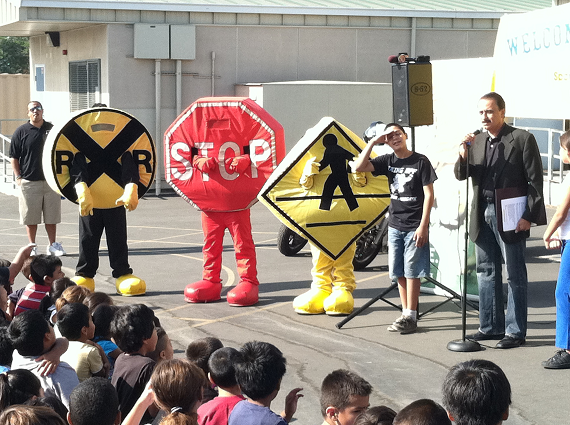Next time you pass by one of our community’s schools, take a look at the surrounding streets and one sobering realization will strike you: the streets around our schools are unsafe. You’ll probably witness students hurrying across five- or six-lane roads, only to reach sidewalks where they must dodge cars whipping into the school parking lot.
Or you’ll see deserted sidewalks and lines of cars driven by parents rightfully ambivalent about letting their children walk or bike to school.
These conditions are the result of decades of car-centric planning that have made our streets unsafe for walking and bicycling and restricted our choices of transportation.
It is no wonder, given the hazards children confront while walking or biking to school, that only 15 percent of children who live within a two-mile radius of their school walk or bike there. Thirty years ago, that figure was 60 percent. Students going to school in disadvantaged communities face the most hazardous conditions. At the same time, one in five children is now considered overweight or obese.
Our community and our children deserve better.
The Safe Routes to School program, along with local non-profits, is working to change these conditions. Funded by national and state set-asides, the program’s goal is to make walking and biking to schools safer, giving children and their parents a safe and healthy transportation alternative.
Infrastructure improvements are desperately needed to enhance walking and biking safety. Crosswalks on streets with heavy or fast-moving traffic can make students more visible. Widening a bicycle lane near a high school or extending it to connect with the school would also improve safety. And for students who choose to bicycle on sidewalks, a lack of curb ramps near their school could force them to enter the road at driveways to avoid the curb. Safe Routes to School funding is crucial to addressing these infrastructure deficits.
Such funding also enables schools to educate children and parents about safe walking and biking practices. For example, schools can produce maps of safe routes near the school, or instruct students to walk their bikes across busy streets. By teaching safe practices from an early age, these programs provide children with skills they will use their entire lives.
This year, Safe Routes to School plans to improve safety at more than a dozen schools in and around Los Angeles. These improvements are a crucial first step to paving the way to a brighter future where our children can safely enjoy healthy, active lifestyles.
(The law firm of Gordon, Edelstein, Krepack, Grant, Felton & Goldstein, LLP is dedicated to protecting the rights of those who have suffered serious injuries on or off the job. Partner Howard Krepack, an avid bicyclist, leads the firm’s bicycle accident practice. For more information about our firm, call us at 213-739-7000 or visit our website: www.geklaw.com.)







